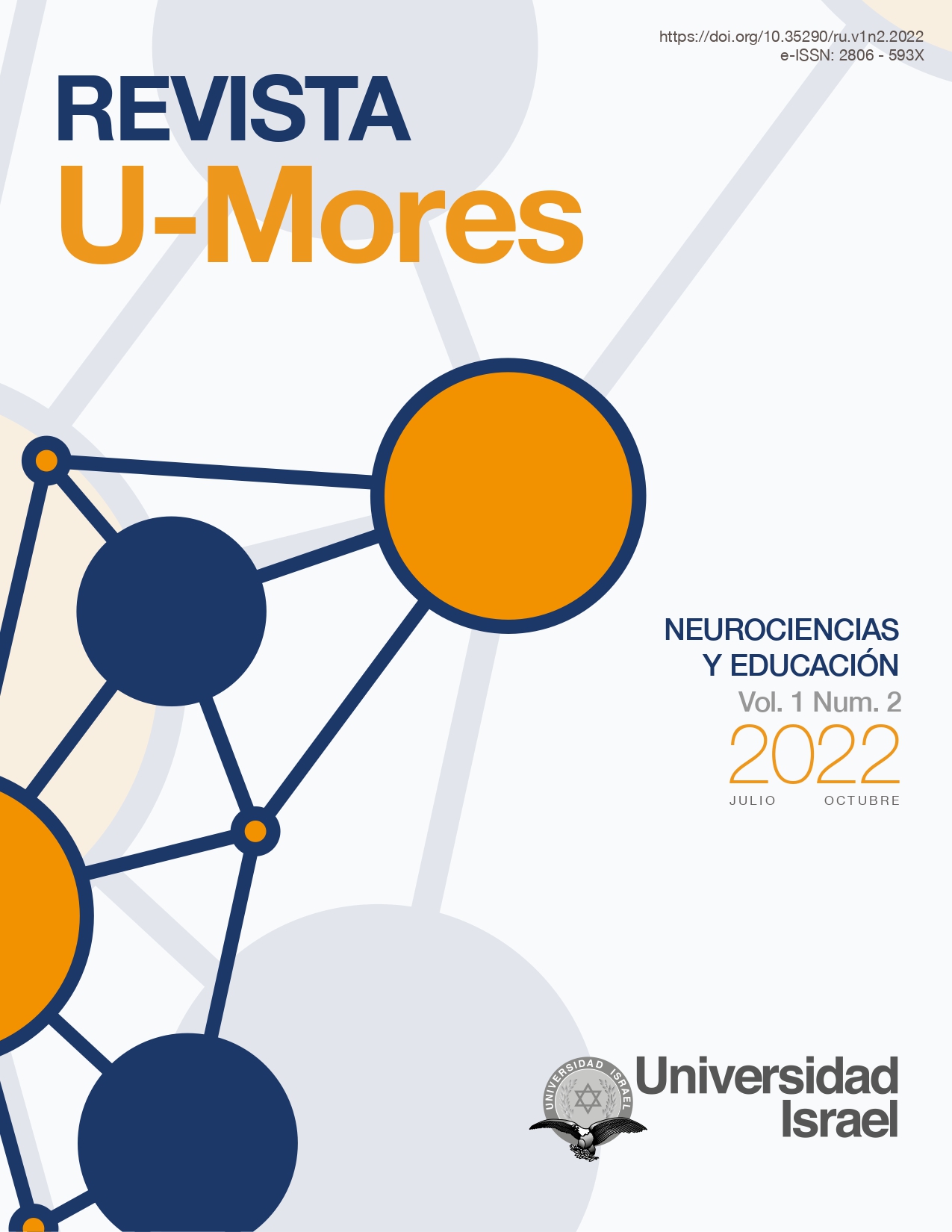Práctica educativa en los tres ámbitos de acción en la U. E. B “Héctor Castillo Reyes”
DOI:
https://doi.org/10.35290/ru.v1n2.2022.591Palabras clave:
práctica educativa, infraestructura, método de enseñanza, estudiantes, docencia, estrategiasResumen
La presente investigación analiza algunos de los factores que pueden interferir en el proceso de aprendizaje y el bajo rendimiento en los primeros años de estudiantes del nivel básico. El articulo describe el caso particular de estudio en una escuela del sector público con una infraestructura deficiente y una alta población de estudiantes que poseen un nivel económico de niveles bajos a medio, donde se piensa evaluar la influencia de las condiciones que presentan los recintos educativos aunado a los deficientes recursos con los que cuentan los docentes con el proceso de enseñanza y aprendizaje. Para este estudio se selecciona un grupo de estudiantes con dificultades de aprendizaje y los ambientes donde interactúan. Asimismo, se realiza una revisión de literatura asociada al tema y cuenta con el monitoreo constante durante seis meses y estructurado en cuatro fases, que permiten analizar detalladamente los procesos. Los resultados son alentadores y permiten demostrar que el proceso de enseñanza y aprendizaje para niños con dificultades especiales presenta avances a medida que los recursos físicos y humanos son incrementados y optimizados con calidad; adicionalmente, se proponen mejoras en el sistema actual.
Descargas
Referencias
Agencia Europea para el Desarrollo de la Educación Especial. (marzo de 2003). Integración Educativa y Prácticas Eficaces en el Aula. European Agency https://www.european-agency.org/sites/default/files/inclusive-education-and-classroom-practices_iecp-es.pdf
Álvarez, J. (2010). La evaluación psicopedagógica. Temas para la Educación (7), 1-8
Badía, A (coord.). (2015). Dificultades de aprendizaje de los contenidos curriculares. Universidad Oberta de Catalunya.
Bengoechea, P. (2017). Dificultades de aprendizaje escolar en niños con necesidades educativas especiales. Un enfoque cognitivo. Universidad de Oviedo.
Escalante, A., y Lino, C. (2014). Influencia de las estrategías metodológicas en la ortografía de los estudiantes de cuarto grado de educación básica de la escuela fiscal Dr Euclides Arturo Masson Benítez [Tesis de grado, Universidad de Guayaquil]. http://repositorio.ug.edu.ec/handle/redug/14165
Fontalvo, H., Iriarte, F., Domínguez, E., Ricardo, C., Ballesteros, B., Muñoz, V., & Campo, J. D. (2007). Diseño de ambientes virtuales de enseñanza-aprendizaje y sistemas hipermedia adaptativos basados en modelos de estilos de aprendizaje. Zona próxima, (8), 42-61. DOI: https://doi.org/10.14482/zp.08.180.81
Núñez, B., Chávez, N., & Fernández, F. (1997). Conceptualización y política de la atención educativa integral del Deficiente auditivo.
Organización de las Naciones Unidas para la Educación, la Ciencia y la Cultura y Ministerio de Educación y Ciencia de España. (1994). Declaración de Salamanca y Marco de Acción sobre Necesidades Educativas Especiales. En Conferencia Mundial sobre Necesidades Educativas Especiales: Acceso y Calidad (págs. 47). https://unesdoc.unesco.org/ark:/48223/pf0000098427
Solé, I. (2001). El apoyo del profesor. Aula de innovación educativa.
Tyler, R., y de Vedia, E. (1973). Principios básicos del currículo (Vol. 370, No. 9). Buenos Aires^ eAR AR: Troquel.
Walton, S. (1993). Sam Walton: made in America. My history. Bantam Books.
Wittwer, J. (1961). Pédologie et pédagogie expérimentale. Bulletin de psychologie, 14(189), 539-545.
Publicado
Número
Sección
Licencia
Derechos de autor 2022 Ana Graciela Guedez-Mujica

Esta obra está bajo una licencia internacional Creative Commons Atribución 4.0.
Los autores que participen de los procesos de evaluación y publicación de sus ediciones conservan los derechos de autor y ceden a la revista el derecho a la primera publicación, tal como establecen las condiciones de reconocimiento en la licencia Creative Commons Reconocimiento 4.0 Internacional (CC BY), donde los autores autorizan el libre acceso a sus obras, permitiendo que los lectores copien, distribuyan y transmitan por diversos medios, garantizando una amplia difusión del conocimiento científico publicado.
- Toda derivación, a partir de esta obra, deberá citar la fuente y a la primera publicación en esta revista. Se permiten derechos comerciales no lucrativos sobre sus contenidos.
- Los autores pueden realizar otros acuerdos contractuales independientes y adicionales para la distribución no exclusiva de la versión del artículo publicado en esta revista, es decir, podrán incluirlo en un repositorio institucional o publicarlo en un libro, siempre que indiquen claramente que el trabajo se publicó por primera vez en esta revista.
- Se permite y recomienda a los autores compartir su trabajo en línea, con la finalidad de intercambios productivos para una mayor y más rápida citación del trabajo como lo establece los efectos del movimiento ‘Acceso Abierto’.
- No puede aplicar términos legales o medidas tecnológicas que restrinjan legalmente a otros de hacer cualquier cosa que permita la licencia: https://creativecommons.org/licenses/by/4.0/deed.es
- La Revista Científica es financiada completamente de los aportes realizados por nuestra entidad editora: Universidad Tecnológica Israel; por tal motivo, no establece cargos o cobros de ninguna índole a sus autores y colaboradores, así como tampoco genera pagos o remuneraciones de ningún tipo a ellos.
- Se asignará un Digital Object Identifier (DOI) a cada publicación.



